M72 Light Anti-tank Weapon System (LAW)
M72 Light Anti-tank Weapon System (LAW)

| TECHNICAL DATA | ||
|---|---|---|
| M72A2, M72A3 | M72A4, M72A5, M72A6, M72A7 | |
| Complete System | ||
| Alternative Designations | Light Antiarmor Weapon, Lightweight Anti-Armor Weapon (LAAW) | Improved Light Antiarmor Weapon (LAW), Improved LAAW, Lightweight Attack Weapon |
| Country of Origin | USA | |
| Date Of Introduction | 1963, original M72 | 1990's |
| Weight | 5.1 lb (2.3 kg) - M72A2 5.5 lb (2.5 kg) - M72A3 | 8.0 lb (3.6 kg) |
| Launcher | ||
| Length (Extended) | 34.67 in (881 mm) | 38.6 in (980 mm) |
| Length (Closed) | 24.8 in (630 mm) | 30.5 in (775 mm) |
| Diameter | 4.9 in (124 mm) | ? |
| Firing Mechanism | Percussion | |
| Front Sight | Reticle graduated in 25-meter range increments | Three-post |
| Rear Sight | Peep, adjusts automatically to temperature change | Peep, adjustable to 350 meters in 50 meter increments |
| Rocket | ||
| Caliber | 2.6 in (66 mm) | |
| Armor Penetration | 12+ in (300+ mm) | |
| Length | 20 inches (508 mm) | |
| Weight | 2.2 lb (1 kg) | |
| Muzzle Velocity | 475 fps (144.8 mps) | 656 fps (200 mps) |
| Minimum Range (Training) | 33 yd (30 m) | |
| Minimum Arming Range | 11 yd (10 m) | |
| Maximum Range | 1,094 yd (1,000 m) | 1,531 yd (1,400 m) |
| Maximum Altitude | ? | 1,039 yd (950 m) |
| Maximum Effective Ranges Beyond these ranges, there is less than a 50% chance of hitting the target. | ||
| Stationary Target | 219 yd (200 m) | 241 yd (220 m) |
| Moving Target | 180 yd (165 m) | ? |
DESCRIPTION
The M72-series light anti-tank weapon (LAW) is a lightweight, self-contained, anti-armor weapon consisting of a rocket packed in a launcher. It is man-portable, may be fired from either shoulder, and is issued as a round of ammunition.
The M72 was designed in the early 1960's for use against light tanks of that era. More recent and improved versions of the M72-series LAWs were produced in the 1990s and include the M72A4, M72A5, M72A6, and M72A7.
Although the M72 is mainly used as an anti-armor weapon, it may be used with limited success against secondary targets such as gun emplacements, pillboxes, buildings, or light vehicles.
Replaced the anti-tank rifle grenade and M20 3.5" rocket launcher in U.S. service. Was to have been replaced by the M136 AT4 rocket, but remains in U.S. service to support the Global War on Terrorism (GWOT).
The M72 was designed in the early 1960's for use against light tanks of that era. More recent and improved versions of the M72-series LAWs were produced in the 1990s and include the M72A4, M72A5, M72A6, and M72A7.
Although the M72 is mainly used as an anti-armor weapon, it may be used with limited success against secondary targets such as gun emplacements, pillboxes, buildings, or light vehicles.
Replaced the anti-tank rifle grenade and M20 3.5" rocket launcher in U.S. service. Was to have been replaced by the M136 AT4 rocket, but remains in U.S. service to support the Global War on Terrorism (GWOT).
LAUNCHER
The tubular rocket launcher is a telescoping, smooth-bore, openbreech weapon. The outer (front) tube is made of plastic-impregnated fiberglass; the inner (rear) tube is made of aluminum. When the launcher is closed, as it is during unit maintenance, the inner (rear) tube and rocket are not visible.
The disposable launcher serves as a watertight packing container for the rocket and houses a percussion-type firing mechanism that activates the rocket.
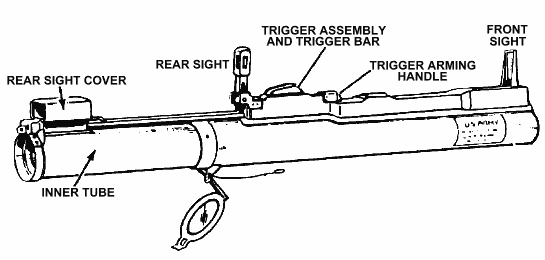
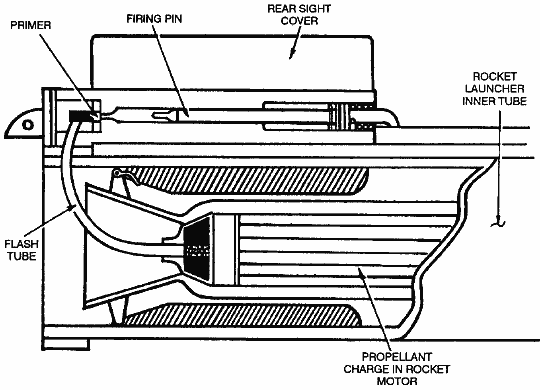
The disposable launcher serves as a watertight packing container for the rocket and houses a percussion-type firing mechanism that activates the rocket.


ROCKET
The rocket is a percussion-ignited, fin-stabilized, fixed munition. It is attached by the igniter to the inside of the launcher.
The rocket consists of a 66mm HEAT warhead, a point-initiating, base-detonating fuze, and a rocket motor. Six spring-loaded fins are attached to the rear of the rocket motor. These fins are folded forward along the motor when the rocket is in the launcher.
The 66mm HEAT rocket warhead consists of a tapered, thin-gauge steel body. The head of the round is olive drab stenciled in yellow. The M412 fuze is dropsafe and boresafe. Its minimum arming distance is about 11 yards (10 meters).
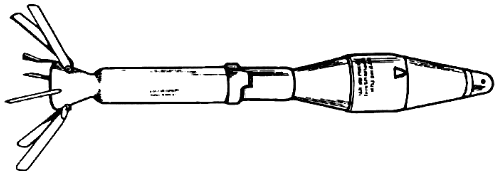
The rocket consists of a 66mm HEAT warhead, a point-initiating, base-detonating fuze, and a rocket motor. Six spring-loaded fins are attached to the rear of the rocket motor. These fins are folded forward along the motor when the rocket is in the launcher.
The 66mm HEAT rocket warhead consists of a tapered, thin-gauge steel body. The head of the round is olive drab stenciled in yellow. The M412 fuze is dropsafe and boresafe. Its minimum arming distance is about 11 yards (10 meters).

FIRING POSITIONS

Basic standing position
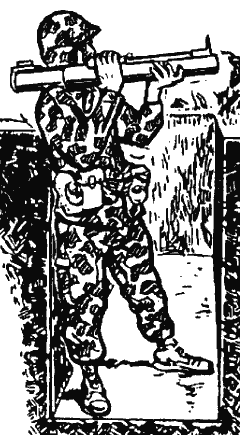
Modified standing position
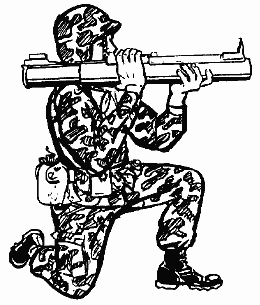
Basic kneeling position
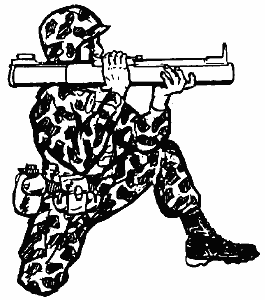
Modified kneeling position
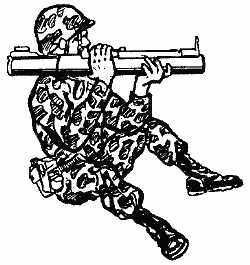
Basic sitting position
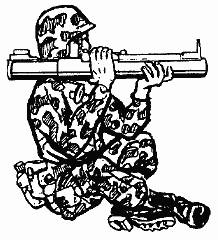
Modified sitting position
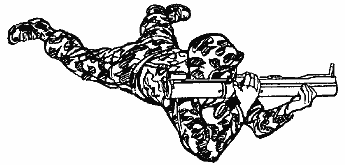
Prone position
FIRING
When ignited, the propellant in the rocket motor burns completely, producing gasses about 1,400F (760C). As the rocket clears the launcher, springs force open the fins, which stabilize the rocket in flight. The gas pressure pushes the rocket toward the target and exits to the rear of the launcher as the back blast.
When it explodes, the force and heat of the explosive focus into a small but powerful gas jet. This directional jet penetrates the target and, if the target is a vehicle, sprays molten metal inside. If the jet hits an engine or ammunition, it may start a fire or cause an explosion.
This image shows how the warhead penetrates 11.8 inches (300 mm) of rolled homogeneous steel armor:

When it explodes, the force and heat of the explosive focus into a small but powerful gas jet. This directional jet penetrates the target and, if the target is a vehicle, sprays molten metal inside. If the jet hits an engine or ammunition, it may start a fire or cause an explosion.
This image shows how the warhead penetrates 11.8 inches (300 mm) of rolled homogeneous steel armor:

- Impact. The nose cone crushes; the impact sensor activates the fuze.
- Ignition. The ogive crush switch activates the electric detonator. The booster detonates, initiating the main charge.
- Penetration. The main charge fires and forces the warhead body liner into a directional gas jet that penetrates armor plate.
- After-armor effects (spalling). The projectile fragments and incendiary effects produce blinding light and destroy the target's interior.
BACK BLAST
The M72 is an open-chambered weapon, so it has no recoil.
M72A2, M72A3
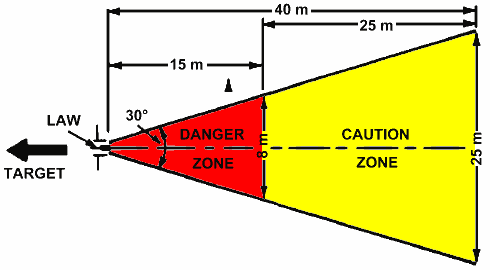 The launcher's total back blast area extends 130 feet (40 m) to the rear. This back blast can damage equipment or seriously injure personnel who are too close to the rear of the launcher.
The launcher's total back blast area extends 130 feet (40 m) to the rear. This back blast can damage equipment or seriously injure personnel who are too close to the rear of the launcher.
M72A4, M72A5, M72A6, M72A7
The total back blast area for these weapons extends 230 feet (70 m) to the rear of the launcher. The total back blast area is greater for the M72A4/A5/A6/A7 LAW than for the M72A2/A3 LAW.
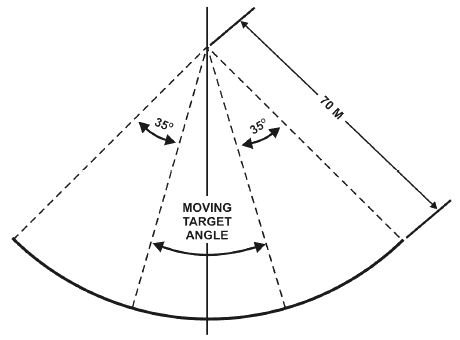
M72A2, M72A3

- Danger zone. All personnel, equipment, and flammable material must be clear of this area.
- Caution zone. The weapon's back blast may throw loose objects to the rear. Therefore, personnel must also stay clear of this area.
M72A4, M72A5, M72A6, M72A7
The total back blast area for these weapons extends 230 feet (70 m) to the rear of the launcher. The total back blast area is greater for the M72A4/A5/A6/A7 LAW than for the M72A2/A3 LAW.

WEAPON CAPABILITIES
The LAW, although light and easy to use, has a small explosive charge and limited penetration. It can be defeated by a double layer brick wall backed by 4 feet (1.2 meters) of sandbags since it cannot produce a loophole in this type construction. The LAW requires at least 11 yards (10 meters) to arm. If it hits a target before it arms, it usually does not detonate.
The LAW causes only a small entry hole in an armored vehicle target, though some fragmentation or spall may occur.
Although the penetration data for the LAW appears promising, it is not an effective breaching weapon. Test data indicates that it cannot, even with multiple shots, create a man-size breach hole.
The LAW causes only a small entry hole in an armored vehicle target, though some fragmentation or spall may occur.
- Of all the common building materials, heavy stone is the most difficult to penetrate. The LAW usually will not penetrate a heavy European-style stonewall. Surface cratering is usually the only effect.
- Layered brick walls are also difficult to breach with light weapons. Some brick walls can be penetrated by multiple firings, especially if they are less than three bricks thick. Five LAW rounds fired at the same spot on a 8-inch (double-brick) wall normally produces a loophole.
- Wooden structural walls offer little resistance to light weapons. Even heavy timbered walls are penetrated and splintered. Three LAW rounds fired at the same area of a wood-frame wall usually produce a man-sized hole.
| Earth | 6 ft (1.8 m), leaving a quarter-sized hole with no span |
|---|---|
| Reinforced Concrete | 2 ft (0.6 m), leaving a dime-sized hole and creating little span |
| Steel | 12 in (305 mm), leaving a dime-sized hole |
Although the penetration data for the LAW appears promising, it is not an effective breaching weapon. Test data indicates that it cannot, even with multiple shots, create a man-size breach hole.
Variants
- M72
- Original production model.
- M72A1
- M72 HEAT warhead
- M72A2, M72A3
- M72A1 HEAT warhead. The rocket used by the M72A2 and M72A3 provides greater target penetration than the M72A1. Otherwise, the systems are essentially identical in performance.
- M72A4, M72A5, M72A6, M72A7
- Improved M72 Light Antiarmor Weapon. The improved M72 light antiarmor weapon system is a compact, light weight, single shot, and disposable weapon with a family of warheads optimized to defeat lightly armored vehicles and other hard targets at close combat ranges.
The improved M72 offers significantly enhanced capability beyond that of the combat-proven M72A3.
The improved M72 consists of a 66mm unguided rocket prepackaged at the factory in a telescoping, throw-away launcher. The system performance improvements include a higher velocity rocket motor that extends the weapon effective range, increased lethality warheads, lower more consistent trigger release force, rifle type sight system, and better overall system reliability and safety.
The improved M72 is transportable by all forms of rail, air, road, and sea transport, including tactical wheeled and tracked vehicles, without any safety constraints, and is certified for air delivery by individual parachutist or by pallet. Issued as a round of ammunition, it requires no maintenance.
The M72A7 LAW with Graze has a graze fuze (to reduce duds) and replaces the Octol-based explosive with PBXN-9 (to make the LAW Insensitive Munitions compliant). Unit cost: $2244.72 (USMC, Fiscal Year 2005).
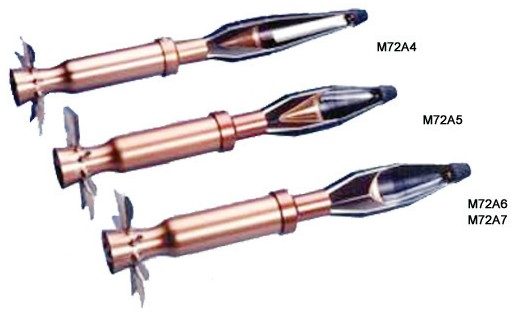
- M72A8 LAW FFE (Fire from Enclosure)
- Anti-armor warhead with FFE propulsion.
- M72A9 LAW ASM (Anti-Structure Munition)
- Anti-structure warhead with standard rocket motor propulsion. Interim weapon until release of M72A10 LAW ASM FFE.
- M72A10 LAW ASM (Anti-Structure Munition) FFE (Fire from Enclosure)
- Anti-structure warhead with FFE propulsion.
- M190 LAW Subcaliber Training Device
- Practice rocket launcher with M73 practice rocket. The M190 subcaliber training device operates the same as an M72A2/A3 LAW. A modified M72A1/A2 launcher converted to fire a 35mm M73 rocket. The rocket, which contains a spotting charge, simulates the firing of the tactical weapon. The M73 rocket launches the same as the tactical rocket, but when the rocket head strikes the target, it sets off the spotting head that produces a flash, noise, and white smoke.
Note that the M73 subcaliber rocket can penetrate 0.124 inches (0.315 centimeters) of steel plate or 8 inches (20.32 centimeters) of soft wood.
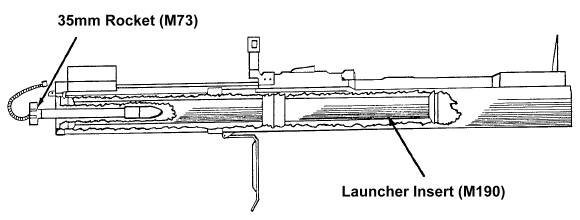
- M72AS 21-mm Trainer System
- The M72AS Trainer System consists of a trainer launcher and a 21mm trainer rocket. Only expended M72A5 and M72A7 tactical light anti-armor weapons are to be converted to M72AS trainer launchers.
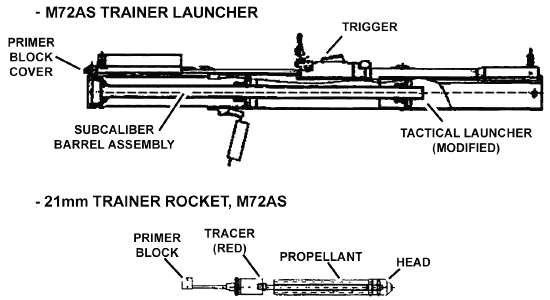





0 komentar
Write Down Your Responses